Art review: The Burrell Collection, Glasgow
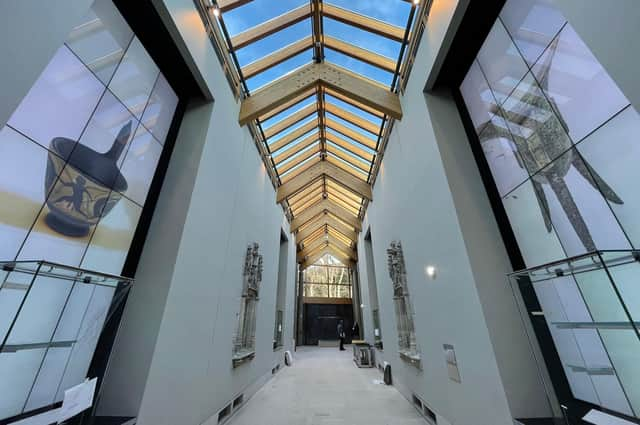

The Burrell Collection, Glasgow ****
On 29 March, the Burrell Collection reopens its doors after a £68.25million refurbishment and six years of closure. Operators Glasgow Life hope the new Burrell, repaired, re-installed and fitted out for the 21st century, will reignite interest in the collection and attract a new generation of visitors.
Shipping magnate William Burrell and his wife Constance gifted their collection of nearly 9,000 objects to the city of Glasgow in 1944. It was described at the time, by the principal of Glasgow University, as “one of the greatest gifts ever made to any city in the world”. He also left money to create a purpose-built museum, eventually designed by Barry Gasson, John Meunier and Brit Andresen and opened in 1983, a weird and wonderful blend of Scots baronial and light-infused modernity, merging into the landscape of the park. It attracted millions of visitors in its first few years and is regarded as an important foundation for the city’s cultural renaissance.
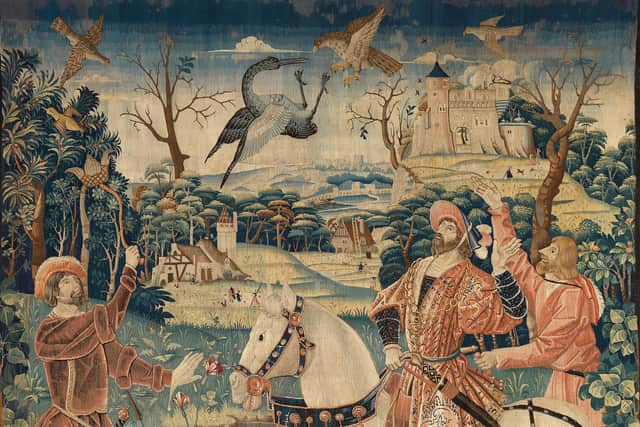

Advertisement
Hide AdBy 2016, however, the building was in need of much TLC. The refurbishment, by architects John McAslan + Partners, has replaced the roof, glazing and cladding, heating and lighting. It has improved visitor facilities, and the carbon footprint. A central atrium has been created for events, with a sweeping staircase down to the lower level. Exhibition space has been increased by some 35 per cent.
Burrell’s collection is a treasure trove of art, antiquities and precious objects: Chinese porcelain, Islamic carpets, 19th-century paintings, medieval architectural fragments, stained glass, arms and armour. It doesn’t suit a linear, chronological display; it’s more a group of constellations of world-class objects shaped by one man’s interests.
At the time of the original opening in 1983, one newspaper described a visit to the collection as a “magical mystery tour”. Turn a corner and you might find any of the following: ancient Egyptian funerary goods, a display of 15th-century drinking horns, a fragment of a Greek statue, the bed of Henry VIII and Anne of Cleeves, embroidery from Uzbekistan, Rodin’s The Thinker.
The original design made a virtue of this, with its entrance through a medieval stone portal. Today, this is deemed too ecclesiastical, not accessible enough; the entrance is modern, and glass. Two of the three recreated rooms from Burrell’s home, Hutton Castle, have gone too, after scoring poorly in visitor tracking. The redevelopment has drawn heavily on public consultation; at times, one fears, too heavily.
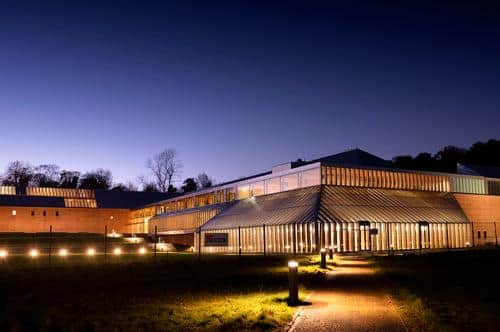

Once inside, the building encourages visitors through another medieval arch, down a long corridor with the gift shop on one side and a display of stained-glass on the other, resplendent against south-facing windows. One of the functions of the refurbishment is to better control light, employing it where needed, for example, on the stained glass, and controlling it carefully where there are fragile exhibits such as textiles.
Take a left at the end of the corridor and you are in a light-controlled area, home to Burrell’s stellar collection of tapestries and Persian carpets, the star of which is the Wagner Garden Carpet, one of the earliest and best preserved examples of its kind, given its own horizontal display. New digital presentations support it, as they do for exhibits throughout the museum, though they are rarely intrusive.
Advertisement
Hide AdMoving on, past 15th-century Dutch and Flemish tapestries, 18th-century glass and porcelain from the Qing Dynasty, you reach the “walk in the woods”, a free-flowing “forest” of sculptures on the north side of the building among which visitors can wander, while floor-to-ceiling windows seem to merge the space into the woods of Pollok Park beyond.
This is where the “magical mystery tour” quality of the Burrell is at its finest, where you might equally encounter a bust of Amenemhat III, an Italian alabaster Piéta, an earthernware warrior from the Ming Dynasty or Rodin’s Joan of Arc. Gorgeous, priceless things sit around in casual splendour waiting to surprise us at every turn.
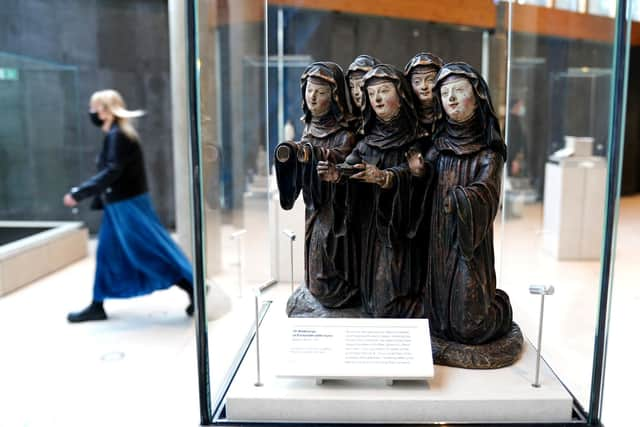

Advertisement
Hide AdA word must be said here about labelling. In the drive for accessibility, the decision was taken to pitch different groups of objects to different audiences (including children), without signalling any change of tack. It can come as a surprise, therefore, to be reading the label on a Babylonian lion’s head from 2000-1600BC looking for its history, and reading instead “Can you make a scary face like this?” One pities the person who had to write the label which explains, delicately, what a eunuch is. And the label for Rodin’s bust of Balzac introduces the subject as “a French author who wrote about everyday life which can be ugly and cruel”.
This does raise questions: how much accessibility is necessary? To what extent do these objects – many of them strange, ancient, beautiful – speak for themselves? Is it possible for over-eager labelling to get in the way? That said, there can be no diminishing the quality and impact of what’s here.
Paintings are given more space and prominence in the new-look Burrell in double-height rooms at the centre of the building, though the installation doesn’t always serve them well. Smaller works (which many of the Burrell paintings are) seem to huddle together for warmth on these towering walls. Many (not just those specifically aimed at children) feel like they are hung too low.
They are arranged in small themed groups: portraits of children, people reading, the colour blue, the male gaze. A series of flower paintings, including Fantin-Latour, Peploe’s Pink Roses, and one of the exquisite flower studies done by Manet towards the end of his life, are mounted against an animated wall of dancing flowers which is hugely distracting from the works themselves.
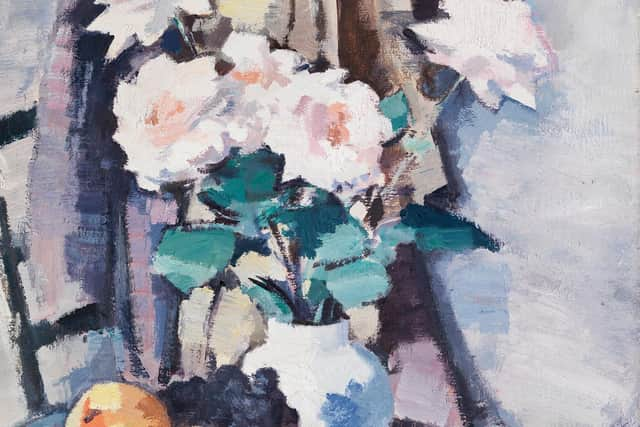

But one must focus on the works. Degas and Daumier, Chardin and Courbet, Rembrandt and Franz Hals and Giovanni Bellini have plenty of power to captivate an audience. When you have work of this calibre, the main thing is to present it and not get in the way, which (animated wall aside) the collection does manage to do.
A splendid room further on celebrates Burrell’s collecting of modern art, with paintings by Whistler, and Sisley, a dreamy evocation of Venice at night by Arthur Melville and works by Glasgow Boys Lavery and Crawhall (a particular favourite of Burrell). In this room, Epstein’s Meum with a Fan and Rodin’s The Wave show that he made some adventurous choices in sculpture.
Advertisement
Hide AdOther rooms take more creative approaches. In one, Chinese ceramics arranged by colour – white, yellow, red, blue and black – with explanations of what the colours signify. It looks stunning, and could only be done in a collection like this one which has riches to spare. Another describes traditions around death, with ritual bells from China, an Egyptian funerary boat, and figures, vessels and paintings from Egyptian tombs.
The first floor galleries are arranged according to craft, including films showing present day craftspeople working with traditional methods, and tools and samples which visitors can touch. But these are more than just interpretation; each includes significant examples from the collection, from stone carving and woodwork to lace-making and ceramics. There is, in fact, treasure everywhere.
Advertisement
Hide AdPost-refurbishment, the Burrell building is a little more functional, a little less enchanted. But much of the magic is in the objects. One could quibble over some of the decisions, but the bottom line is this: The Burrell is extraordinary. It’s quirky and strange and full of riches. Go see it. Everything else is secondary.
A message from the Editor:
Thank you for reading this article. We're more reliant on your support than ever as the shift in consumer habits brought about by coronavirus impacts our advertisers.
If you haven't already, please consider supporting our trusted, fact-checked journalism by taking out a digital subscription at https://www.scotsman.com/subscriptions